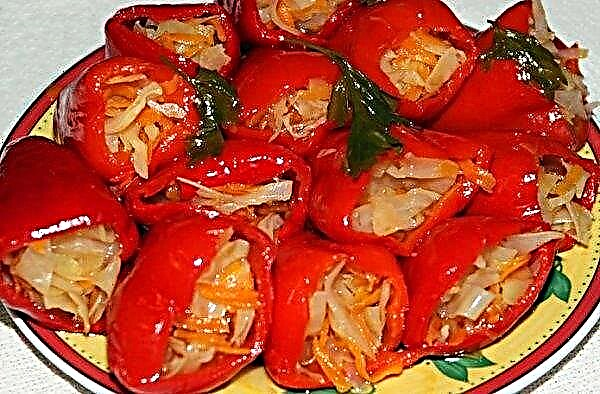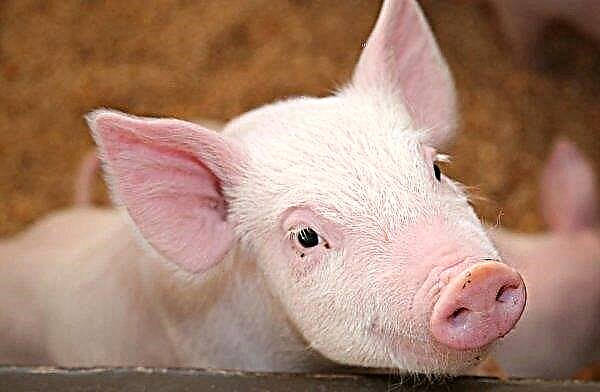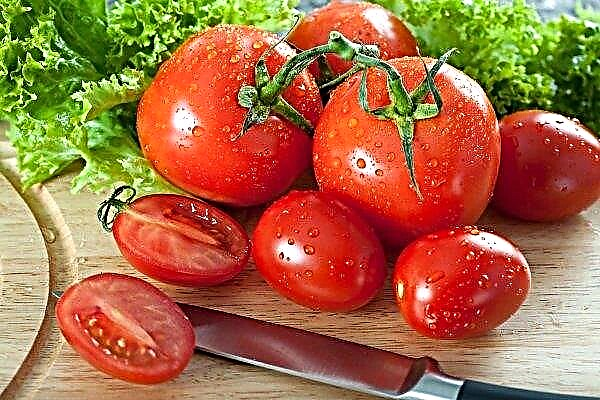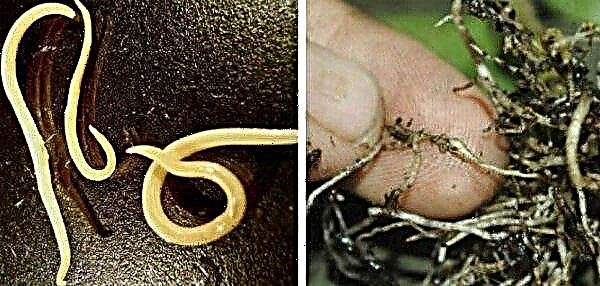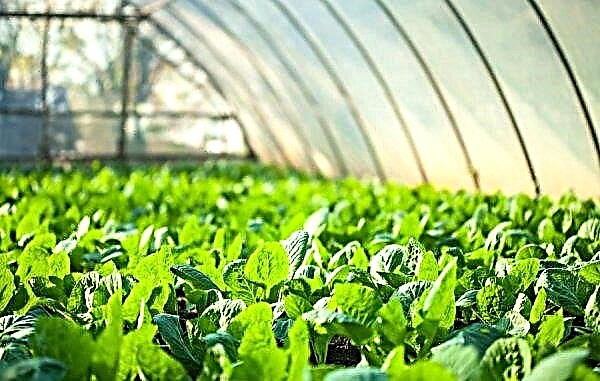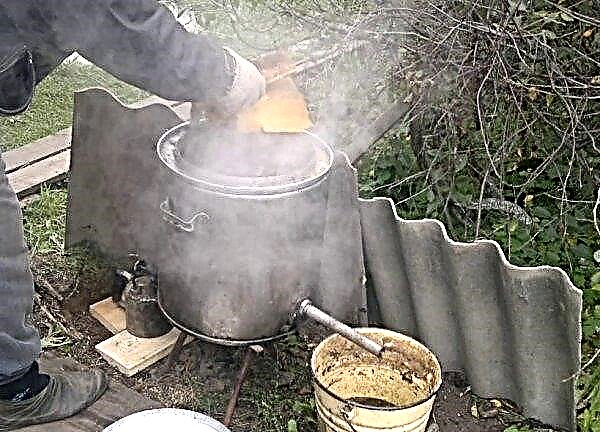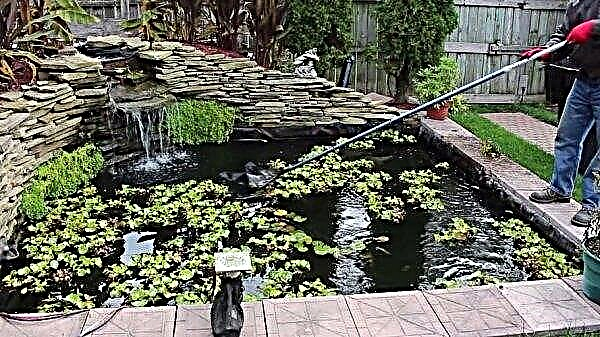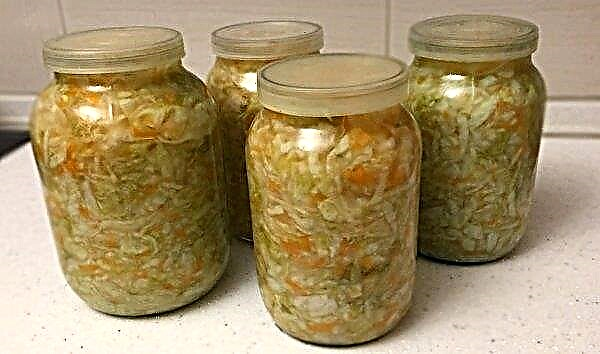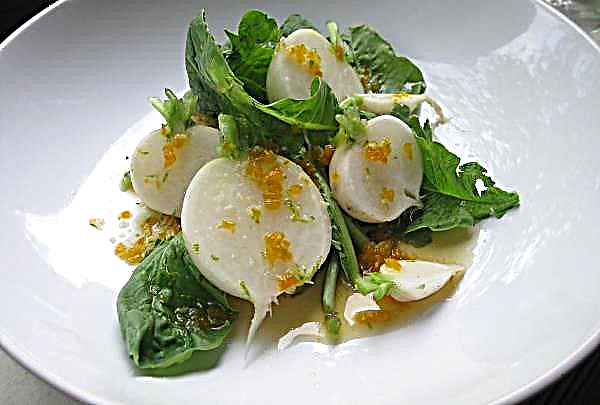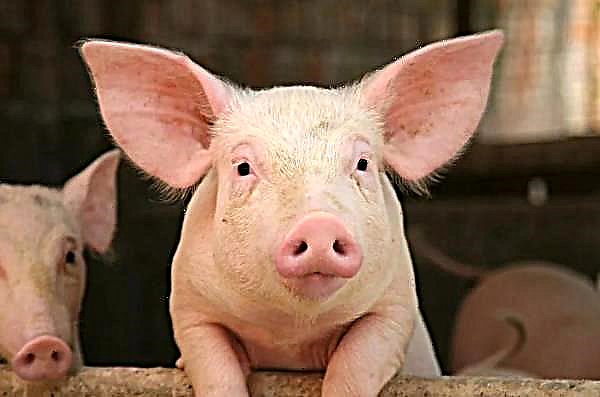Svitanok Kiev - one of the most popular varieties of potatoes, characterized by a pleasant taste and good keeping quality. A more detailed description of the vegetable and the features of its cultivation are described in this article.
History of varieties and regions of cultivation
Bred by Ukrainian scientists in 1987 and intended for cultivation in regions of temperate and sharply continental climate. It is successfully grown on the fields of Ukraine, the Republic of Belarus, Moldova and the Russian Federation.
Description and characteristic
Detailed information on this variety is given below.
Description of tops and root crops
The bush consists of upright and gathered together stems, which are moderately covered with green mass. The foliage is medium sized. Blooms profusely, purple or red. The root system is well developed, from 8 to 12 oval tubers are formed on one plant. The weight of one potato reaches 90-120 g.
 The warmer the climate, the earlier the tubers will ripen
The warmer the climate, the earlier the tubers will ripen
The surface of the tuber is covered with a thin, light pink peel with small eyes that are painted a few tones darker. The pulp is light - creamy white. Root crops contain about 18-19% of starch, due to which they have a rich, non-watery taste, during heat treatment they acquire a delicate and crumbly consistency, and also retains color.
Did you know? Potato takes the 4th place among the most consumed products in the world, second only to wheat, rice and corn.
Productivity
Subject to all agricultural standards, it is possible to collect about 460 centners of root crops per 1 hectare. The average yield is at the level of 250-300 kg / ha.
Harvest ripening dates
The growing season lasts from 85 to 105 days.
 Svitanok Kiev is a fairly popular type of potato in many countries of the world
Svitanok Kiev is a fairly popular type of potato in many countries of the world
Disease immunity
At the genetic level, the variety is resistant to the following ailments:
- mosaic viruses;
- scab;
- black leg;
- cancerous lesions;
- rhizoctonia.
Pros and cons of the variety
- The advantages include:
- rich taste;
- high starch content;
- productivity;
- the same size of tubers;
- unpretentiousness in leaving;
- resistance to many diseases.
As for the disadvantages of the variety, they have not been identified.
Did you know? Svitanok Kievsky variety does not lose its properties and does not degenerate for many years, therefore, previously harvested crops are used for planting
Features of outdoor cultivation
The variety is undemanding to growing conditions, but there are a number of recommendations regarding its cultivation.
Dates and place for landing
Light soil of sandy nature is well suited for landing. This event is held in May, however, in a warm climate, tubers can be planted in mid-April.

For this purpose, they allocate lands on which they were previously cultivated:
- legumes;
- cabbage;
- roots;
- pumpkin;
- cucumbers.
It is necessary to make sure that the bed is well lit, located, preferably on a hill, to avoid stagnation of water.
Important! As a prevention of late blight, it is forbidden to plant potatoes after tomatoes, eggplants, peppers, tobacco, physalis.
Preparation of planting material and soil
The soil begins to be prepared in the fall. At this stage, for digging, for each 1 m²:
- 7 kg of rotted manure;
- 40 g of superphosphate;
- 17 g of potassium sulfate.
In spring, when the soil warms up to + 10 ° C, another digging of the soil is carried out with the simultaneous removal of weed grass. After that, form beds in the direction from north to south.

For subsequent cultivation, medium-sized root crops are selected. Prepare planting material 1 month before planting.
For this, root crops are laid out in one layer and placed in a well-lit place with a temperature:
- the first 10-12 days - +18 .. + 20 ° C;
- further - +10 ... + 14 ° С.
In general, germination takes about 30 days. After that, it is necessary to treat the potato with Poteytin growth stimulator. For this, one ampoule of substance is dissolved in 1 liter of water, calculated on 50-60 kg of tubers.
 To protect root crops from pests, fungicidal preparations such as Prestige are used - 100 ml of the active substance are mixed with 5-6 liters of water per 100 kg of potatoes, after which vegetables are sprayed
To protect root crops from pests, fungicidal preparations such as Prestige are used - 100 ml of the active substance are mixed with 5-6 liters of water per 100 kg of potatoes, after which vegetables are sprayed
Landing pattern and process
For planting, furrows are formed with a depth of 5 cm, maintaining a distance between rows of 70 cm. Planting material is placed with an interval of 30 cm from each other, which will ensure the full development of both the underground and terrestrial parts of the plants. After which, the seed material is covered with earth.
Important! The best option for planting, the so-called seeds — tubers weighing 50-80 g.
Care Features
In order to get the maximum indicators for the collection of vegetables, it is enough to follow elementary recommendations for care.
Watering and fertilizer
The need and frequency of irrigation depends on climatic conditions. Watering of potato stands is carried out only in drought conditions, at the rate of 3 liters of water for each bush. In other cases, the culture does not need additional moistening of the soil, since excess moisture can lead to rotting of root crops.
 This type of potato can optionally be fed with ammonium nitrate, superphosphate immediately before watering
This type of potato can optionally be fed with ammonium nitrate, superphosphate immediately before watering
As for fertilizer application, the variety responds well to such events.
Perform the procedure 3 times:
- after emergence of shoots;
- during budding;
- during flowering.
Introduce diluted with water bird droppings in a ratio of 2: 1. About 6-10 liters of fertilizer are used per one hundred square meters.
Important! Potatoes cannot be planted in the same place for several seasons in a row, as spores of fungi and pathogenic microorganisms accumulate in the soil, which will cause the defeat of the new crop.
Weed control and cultivation
Potatoes need weeding, as weed grass depletes the soil and disrupts the growth process of the crop. In the process of removing weeds, loosening of the earth additionally occurs - the access of moisture and air to potato bushes increases.
Weeding is carried out twice a season:
- 3-4 weeks after planting, with a height of sprouts 2-4 cm;
- before flowering potatoes, at the moment when the bushes grow 20-30 cm in height.

The soil is loosened before emergence, while small weeds die and the soil crust is destroyed. This contributes to aeration of the soil, as well as its faster heating. Repeat the procedure after each rainfall.
Pests and diseases
Potato Svitanok Kiev affected by leaf curl virus. The infected plant becomes pale green, the upper side of the leaf turns yellow, and the back becomes pink. The leaves curl into a tube and become fragile. Bushes, on which the first symptoms of the disease appeared, need to be dug up and burned. Most often, the virus is carried by bugs and aphids, so the treatment is aimed at combating these pests. To do this, the bushes are treated with a soap solution (100 g of soap is dissolved in 10 l of water).
 As a prophylaxis, seed is treated with antiviral drugs, periodically sorted, discarding damaged tubers
As a prophylaxis, seed is treated with antiviral drugs, periodically sorted, discarding damaged tubers
For the prevention of diseases of culture crop rotation required. Harvest completely and plant debris, as this is an ideal environment for the development of pathogens.
Collection and storage features
Depending on the climate zone, harvesting occurs at the end of June-August. A week before the collection of root crops, cut the tops and remove it from the site, and then burn it.
Did you know? There are varieties of potatoes with pulp of blue color! The most famous of them is Linzer Blaue.
The tubers themselves are dug up and dried under the sun for no more than 1 hour. Further, it is necessary to withstand root crops for 40 days in a dark place at a temperature of +18 ... + 19 ° C and an air humidity of 90-95%. During this period, the vegetable will finally ripen and its peel will condense. After that, the potatoes are stored in conditions with a humidity index of at least 85% and a temperature of 3-4 ° C. On average, the shelf life is 6-7 months.

Potato Svitanok Kiev is a mid-early variety, characterized by a high starch content and excellent taste. Use the above recommendations and grow a crop in your yard.

